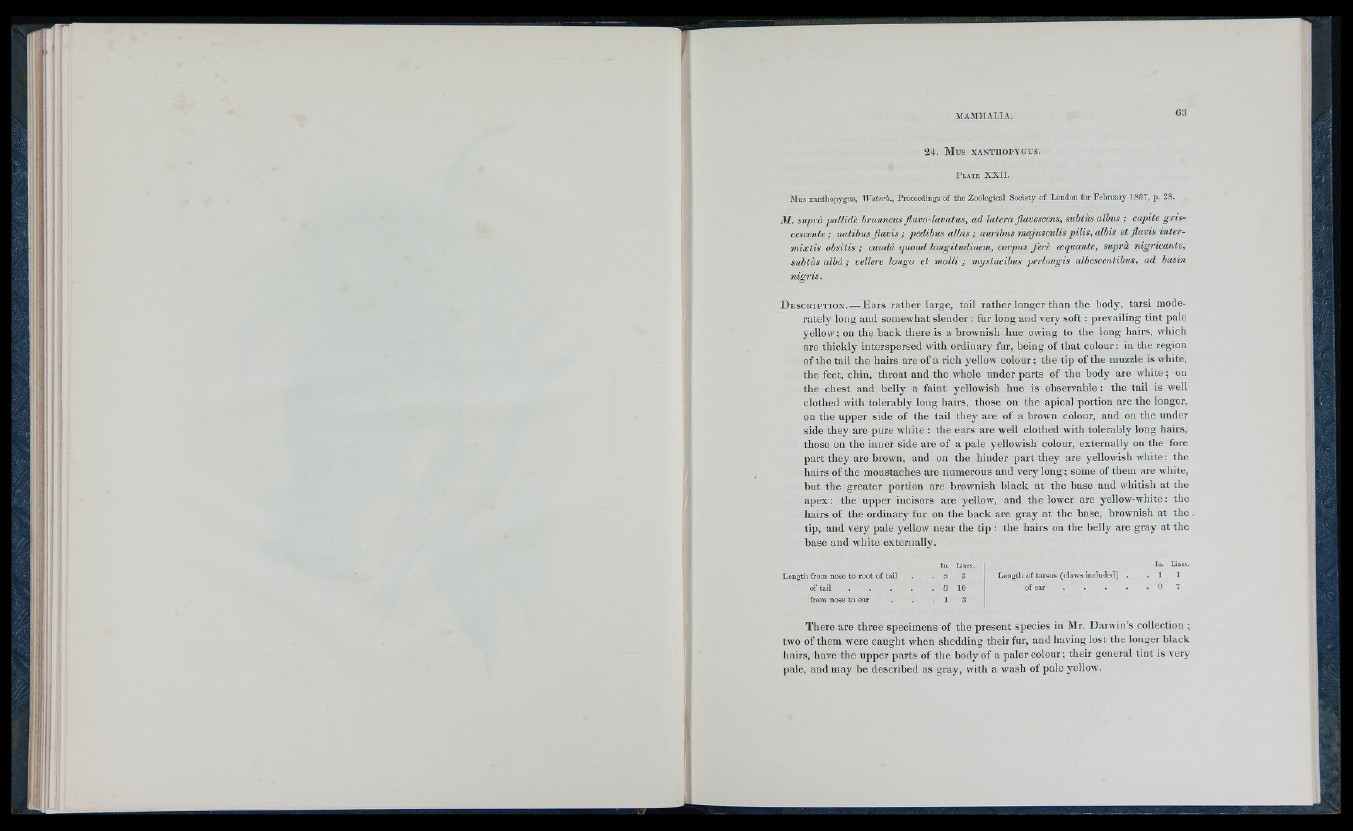
24. Mus XANTHOPYGUS.
P late X X II.
Mus xanthopygus, Waterh., Proceedings of the Zoological Society of London for February 1837, p. 28.
31. suprà pallidè brunneus flavo-lavatus, ad latera flavescens, subtùs albus ; capite gris-
cesceuie; natibus flavis ; pedibus albis ; auribus inajusculis pilis, albis et flavis inter-
mixtis obsitis ; caudâ quoad longitudinem, corpus ferè oequante, suprà nigricante,
subtùs albâ ; vellere longo et molli ; tnystacibus perlongis albescentibus, ad basin
nigris.
D e s c r ip t io n .— Ears rather large, tail rather longer than the body, tarsi moderately
long and somewhat slender : fur long and very soft : prevailing tint pale
yellow; on the back there is a brownish hue owing to the long hairs, which
are thickly interspersed with ordinary fur, being of that colour; in the region
of the tail the hairs are of a rich yellow colour ; the tip of the muzzle is white,
the feet, chin, throat and the whole under parts of the body are white; on
the chest and belly a faint yellowish hue is observable : the tail is well
clothed with tolerably long hairs, those on the apical portion are the longer,
on the upper side of the tail they are of a brown colour, and on the under
side they are pure white : the ears are well clothed with tolerably long hairs,
those on the inner side are of a pale yellowish colour, externally on the fore
part they are brown, and on the hinder part they are yellowish white: the
hairs of the moustaches are numerous and very long; some of them are white,
but the greater portion are brownish black at the base and whitish at the
apex : the upper incisors are yellow, and the lower are yellow-white : the
hairs of the ordinary fur on the back are gray at the base, brownish at the
tip, and very pale yellow near the tip : the hairs on the belly are gray at the
base and white externally.
Length from nose to root of tail . . 6 3
of t a i l ...................................................3 10
from nose to ear . . . 1 3
Iq. Lines.
Length of tarsus (claws included) . . 1 1
of ear . . . • . 0 7
There are three specimens of the present species in Mr. Darwin’s collection ;
two of them w'ere caught when shedding their fur, and having lost the longer black
hairs, have the upper parts of the body of a paler colour; their general tint is very
pale, and may be described as gray, with a wash of pale yellow.